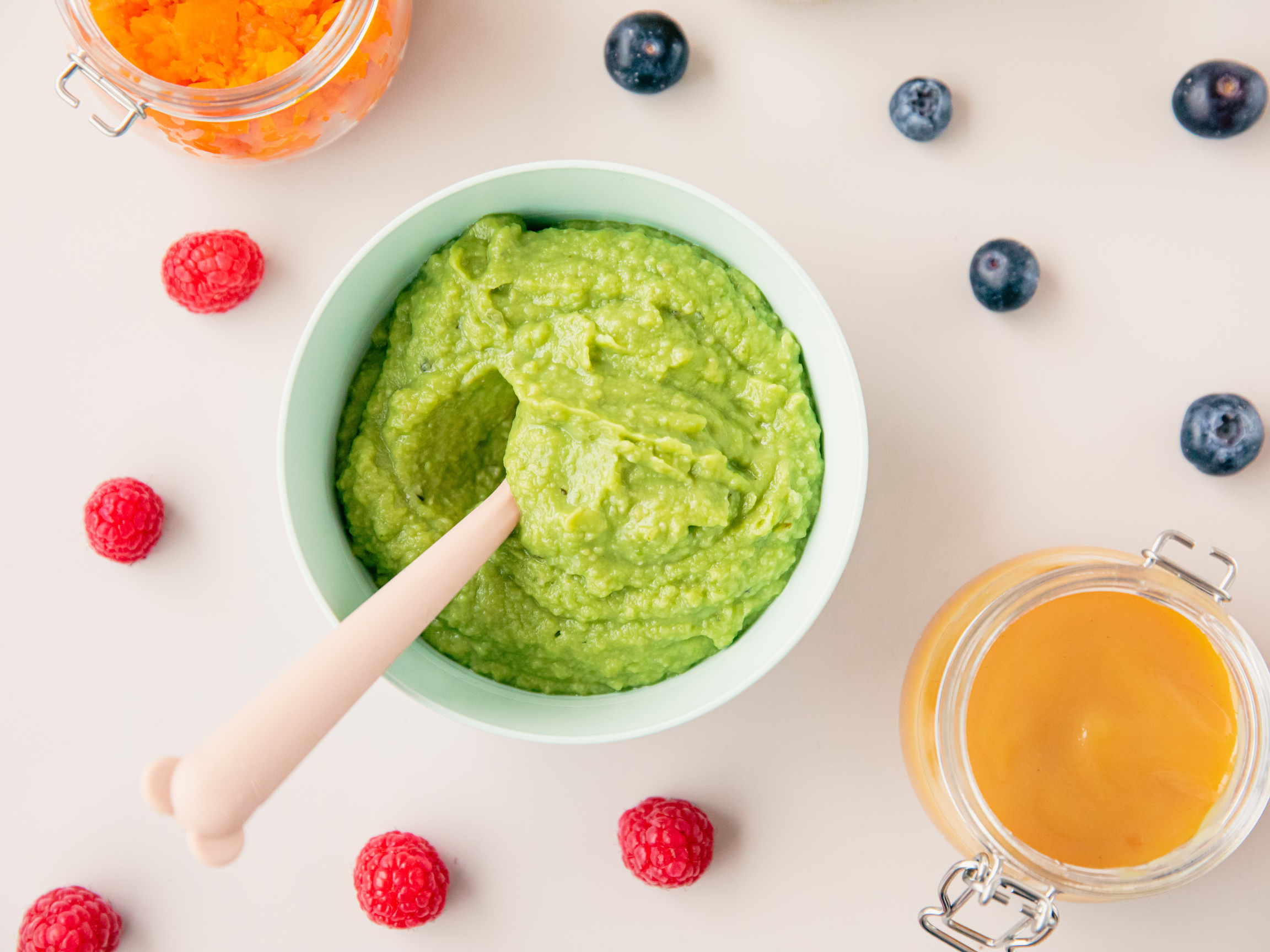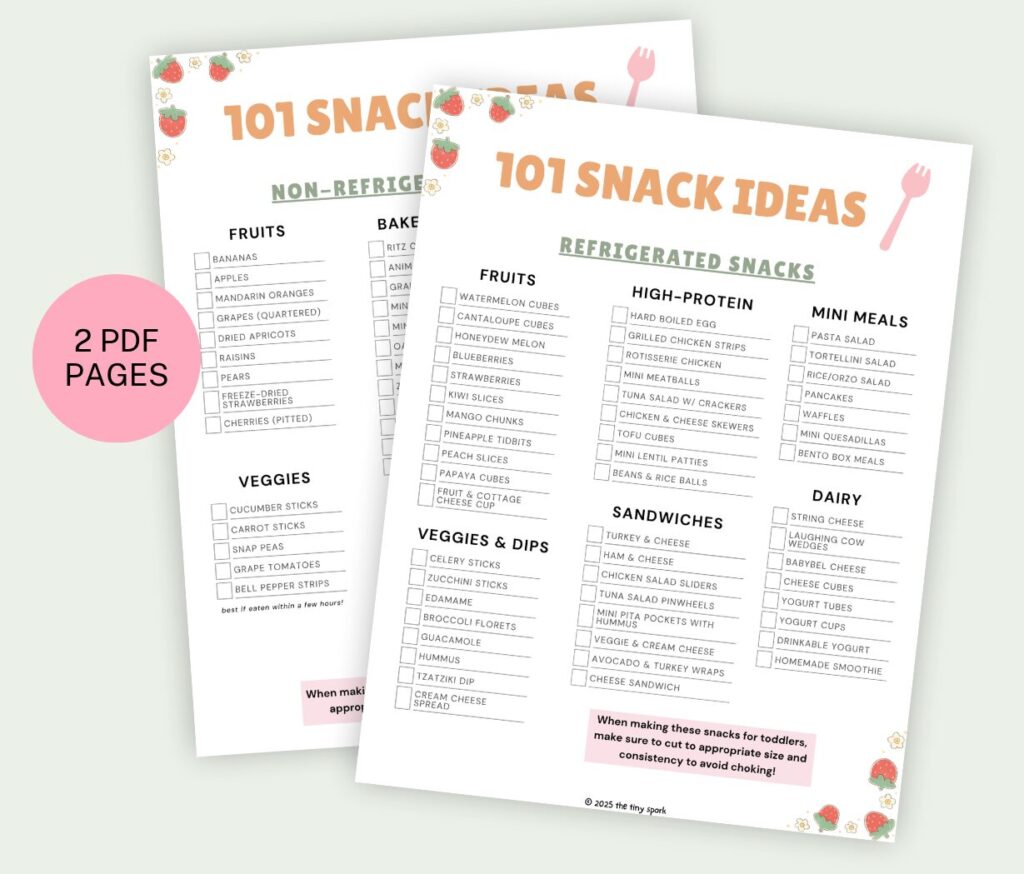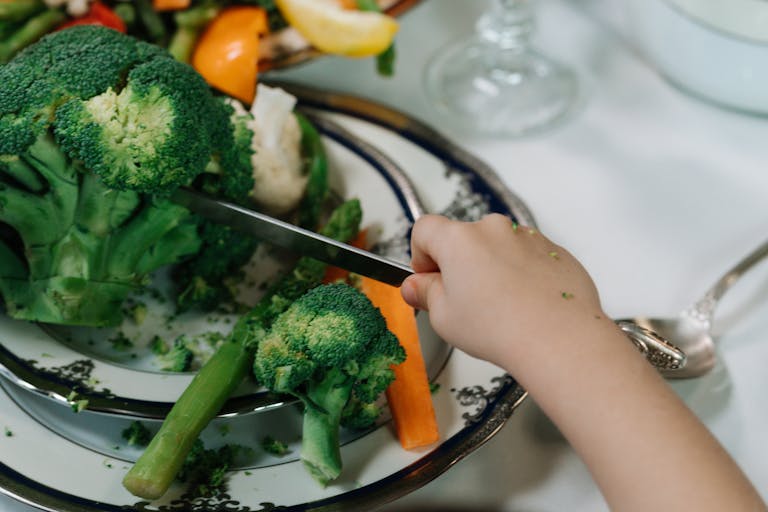20 Best First Solid Foods for Babies That You Can Make at Home
This post features 20 best first solid foods for babies that I recommend as a pediatrician. Most of these can be easily made at home! I also include the health benefits of each food and recommendations for how you can prepare and serve it to your little ones.

Disclaimer: The information provided in this blog post is for general informational purposes only and is not intended as medical advice. Always consult with your child’s pediatrician before making any changes to their diet or feeding approach, especially if you have concerns about nutrition, growth, or feeding difficulties. Read the full disclaimer here.
Woohoo you got the green light from the pediatrician to start solids! I’m sure you’re super excited, maybe a little nervous about what to feed your baby.
The good news is that babies don’t need fancy foods or elaborate recipes when you’re starting out. Single-ingredient foods are the best to help your baby explore different textures and develop their oral motor muscles.
You also don’t need a lot of tools to make baby food. Just a blender, fork, and some baking sheets for roasting veggies. Plus, you can make a big batch of baby food at once and freeze it to use throughout the week!
In this post, I’m sharing 20 of the best first foods for babies. These foods are healthy and offer a variety of different flavors, textures, and nutrients for your growing baby. Most of these foods are soft enough to be worked into baby-led weaning recipes as well!
If you’re looking for general tips on how to start solids for your infant or just want to get some basic information, don’t forget to check out this post where I share 20 of the most common questions I get asked as a pediatrician about starting solids!

Tired of the same old snacks?
Get a FREE printable list of 101 easy snack ideas!
By submitting the form, you are agreeing to join my mailing list. I email no more than 2x/month and you can unsubscribe at any time!
Disclaimer: The information provided in this blog post is for general informational purposes only and is not intended as medical advice. Always consult with your child’s pediatrician before making any changes to their diet or feeding approach, especially if you have concerns about nutrition, growth, or feeding difficulties. Read the full disclaimer here.
The Best First Starter Fruits
1. Bananas
Why it’s great: Ripe bananas are one of the easiest fruits to start off with! It’s loaded with potassium and vitamin B6. They’re very easy to prepare since they’re naturally soft and easy to mash up. However, I recommend giving banana in moderation since it can be constipating for some infants.
💡 Tip for preparing: Mashing or pureeing ripe bananas with breastmilk or formula in a blender usually works the best.
2. Avocado
Why it’s great: Avocados are one of the biggest powerhouse foods. They’re rich in healthy fats, which are very important for brain development. It’s another food that’s very easy to prepare since it’s naturally creamy and “mushable” when ripe!
💡 Tips for preparing:
- Peel, remove pit, and mash ripe avocado with a fork until smooth
- If doing baby-led weaning, cut into spears to make it easier for little hands to grip as shown in the picture below

3. Pears
Why it’s great: Pears are rich in fiber and vitamin C. Not to mention, they’re delicious! I often recommend pears for babies who are constipated after starting solids, and it works like a charm thanks to its high levels of fiber.
💡 Tip for preparing: Peel, then steam or simmer to soften the pears. Once soft, mash or puree as desired.
4. Apples
Why it’s great: Apples are another great source of vitamin C for your little one! It’s also quite simple to prepare, but it does need to be cooked or steamed before serving to prevent choking. Some parents find it useful for constipated infants, but I have had other parents report infants getting constipated when eating apples, so watch carefully!
💡 Tip for preparing: Peel, chop, then steam or simmer apples first to make them soft. Then mash or puree as desired. You can also mix cooked apples into oatmeal for some variety! Just make sure that your baby has tolerated oatmeal by itself first.
5. Blueberries
Why it’s great: Blueberries are a spring favorite and perfect for little tummies! They’re packed with antioxidants, fiber, and tons of vitamin C. Do not give whole blueberries to your little one since this can be a choking hazard!
💡 Tips for preparing:
- You may have to lightly steam blueberries to soften them a bit before preparing
- If you’re serving a blueberry puree, I recommend running it through a strainer before serving to remove any large pieces of skin/chunks
- While you can smash blueberries into flat discs and offer them as finger foods, I generally recommend waiting to do this until your infant is a little older (about 9 months of age) to prevent choking

Tired of the same old snacks?
Get a FREE printable list of 101 easy snack ideas!
By submitting the form, you are agreeing to join my mailing list. I email no more than 2x/month and you can unsubscribe at any time!
The Best First Starter Vegetables
6. Sweet Potato
Why it’s great: Sweet potatoes are a baby favorite thanks to their naturally sweet flavor and soft texture. They’re rich in beta-carotene (which the body converts into vitamin A) and potassium. They also contain some fiber, which may help babies when constipated.
💡 Tip for preparing: Peel, then steam or roast sweet potatoes first to make them soft. Once soft, you can mash or puree with breastmilk or formula.
7. Carrots
Why it’s great: Carrots are another great source of beta-carotene (hence, vitamin A). They’re also mild in flavor and easy to digest when cooked well.
💡 Tip for preparing: Steam or boil peeled carrots until completely soft first. Then mash or puree as desired.
8. Butternut Squash
Why it’s great: Butternut squash is full of vitamins A & C and provides a natural sweetness. It becomes smooth and creamy when cooked, which is perfect for baby food!
💡 Tip for preparing: Roast cubes of butternut squash until completely soft first. Then mash or puree as desired.
9. Zucchini
Why it’s great: Zucchini is mild in flavor and makes a great first food for babies! It contains many nutrients like vitamin C, manganese, and potassium.
💡 Tip for preparing: Steam or saute zucchini until completely soft first. Then mash or puree as desired.
10. Pumpkin
Why it’s great: Pumpkin is another colorful veggie rich in vitamin A, with a smooth texture when cooked. Plus it’s super festive for fall babies!
💡 Tip for preparing: You can use roasted fresh pumpkin or plain canned pumpkin puree (not pumpkin pie filling). Thin out with breastmilk/formula as needed.
11. Green Peas
Why it’s great: Peas are a classic baby food! They’re also full of protein, fiber, vitamin K, and other micronutrients. They mash up and blend pretty easily as well, making them a great starter solid.
💡 Tips for preparing:
- Steam or boil peas until very soft
- If you’re making a puree, I recommend running it through a strainer before serving to remove any large pieces of skin/chunks
- While you can smash peas and offer them as finger foods, I generally recommend waiting to do this until your infant is a little older (about 9 months of age) to prevent choking
12. Broccoli
Why it’s great: Another classic baby food! Broccoli is an amazing source of vitamin C, folate, and fiber. Plus, babies love picking up and eating the little florets!
💡 Tip for preparing: Steam large broccoli florets until completely soft first. Then mash or serve “strips” of steamed broccoli florets with stalks for baby to grasp and eat (if doing baby-led weaning)
The Best Iron-Rich Starter Foods
13. Iron-Fortified Baby Oatmeal
Why it’s great: Single-grain iron-fortified baby cereals, like oatmeal or barley, are a great starter food mainly because of the iron content. Baby’s iron stores naturally start to decline after 4 months of age – especially in breastfed infants. It’s important to start supplementing with iron-rich foods once your pediatrician gives you the okay to start solids.
💡 Tip for preparing:
- Offer oatmeal in a bowl and spoon – not in the bottle unless your pediatrician recommends it
- Mix the dry oatmeal with breastmilk or formula to achieve a smooth consistency. Start with 1-2 teaspoons of the oatmeal to 1oz of breastmilk/formula, but you can add more liquid to achieve the right consistency
- Start with a thinner texture and thicken gradually as baby gets older
- You can add fruits or veggies into the oatmeal to give it a little flavor! But, make sure your baby has tolerated both the oatmeal and fruit by itself first
14. Lentils
Why it’s great: Lentils are amazing powerhouses full of protein, iron, fiber, and micronutrients. They’re an especially good choice for vegetarian families! Just make sure you make it smooth and that the texture is age-appropriate.
💡 Tip for preparing: Cook lentils until they’re very soft and break apart easily. For younger babies, I recommend pureeing in a blender with breastmilk or formula to make it nice and smooth. Older babies can tolerate it mashed.
15. Quinoa
Why it’s great: Yes, babies can have quinoa – as long as its prepared appropriately! Quinoa is a gluten-free grain, and a great source of protein, fiber, iron, magnesium, and zinc. It’s another great base for vegetables!
💡 Tip for preparing: Cook quinoa until soft and tender. I recommend pureeing it in a blender along with vegetables and a bit of formula or breastmilk. Older babies can tolerate it mashed alongside other veggies.
16. Chickpeas (Garbanzo Beans)
Why it’s great: Chickpeas are high in iron, protein, fiber, folic acid, and zinc. This is another great option for vegetarian families to incorporate both protein and iron into their baby’s diet.
💡 Tip for preparing: You can use canned chickpeas, but just make sure you use a can with no added salt and rinse the beans well. Cook until soft, then mash or puree with breastmilk or formula for serving
17. Black Beans
Why it’s great: Black beans are another great powerhouse protein that can easily be incorporated into your baby’s diet from a young age. It’s also a great source of iron, fiber, and antioxidants. Plus, they have a naturally creamy texture on the inside which makes it baby-friendly!
💡 Tip for preparing: Same as above – you can use canned black beans, but just make sure you use a can with no added salt and rinse the beans well. Cook until soft, then mash or puree with breastmilk or formula for serving.
18. Spinach
Why it’s great: Yes I know spinach is a vegetable, but I wanted to include it in this section to highlight that spinach is an excellent source of iron for babies! It also contains other nutrients like calcium and vitamins A, C, and K.
💡 Tip for preparing: Make sure you cook the spinach to soften it before serving since raw spinach can be hard to digest for little tummies. Steam or saute fresh spinach until very soft, then puree until smooth. You can also mix it with other veggies to enhance the flavor and taste!
19. Pureed Beef
Why it’s great: Red meats, like beef and lamb, are excellent sources of iron. It’s also high in protein, which is important for your baby’s development at this age.
💡 Tip for preparing: The biggest thing when serving meat to babies is making sure it’s thoroughly cooked and very soft. Use a tender cut like ground beef, sirloin, or chuck roast. I recommend cooking meat for a little longer than you normally would to get it to a soft enough consistency. Then puree with breastmilk or formula to create a smooth, soft puree.
20. Pureed Chicken or Turkey
Why it’s great: For babies who don’t love red meat, or families who don’t prefer it, poultry is another excellent source of protein and iron.
💡 Tip for preparing: Same thing as above – you want to make sure that the meat is thoroughly cooked and very soft. Use skinless chicken/turkey breast or thigh. I recommend cooking meat for a little longer than you normally would to get it to a soft enough consistency. Then puree with breastmilk or formula to create a smooth, soft puree.
I hope you found this list helpful and found some inspiration for recipes to help your little one start on solid foods! For more information on starting solids, check out my post on starting solids 101!
Which of these foods did your baby love (or spit out)? Let me know in the comments! Happy feeding!





